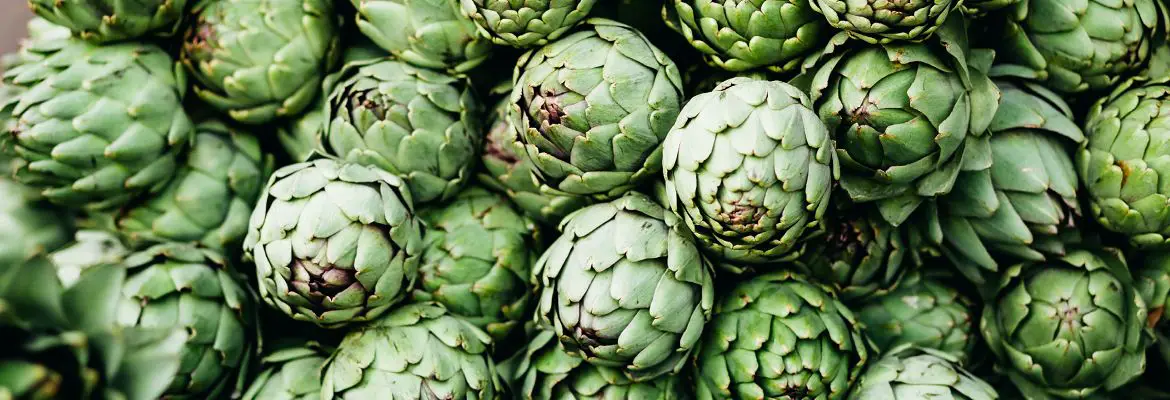Though considered as a vegetable, artichoke technically belongs to thistle family of plants.
The immature artichoke flower-head receptacle, known as the heart, as well as the thick bracts, are considered delicacies. Pistachio and lime green colors are emphasized throughout the densely packed leaves of globe artichokes.
The tips of artichoke leaves contain needle-like thorns, which are usually removed during preparation. When they are young and tender, globe artichokes can be eaten raw. Cooked artichokes become sweet and nutty, and have a toasted nut flavor.
Average diameter of an artichoke is 7-13 cm ( 3 – 5 inches). Average weight of artichoke is around 1000 grams ( 2.2 pounds or 35 ounces).

Scientific name of Artichoke
Cynara Cardunculus
Other names of Artichoke
- Hattychook
- Hathipich
- French artichoke
- Green artichoke
- Globe artichoke
Calories by source in Artichoke
- Calories by carbohydrate in Artichoke = 75%
- Calories by fat in Artichoke = 5%
- Calories by protein in Artichoke = 20%
Fats and Fatty Acid profile of Artichoke
- Polyunsaturated fat (PUFA) in Artichoke = 62%
- Saturated fat (SF) in Artichoke = 33%
- Monounsaturated fat (MUFA) in Artichoke = 5%
Nutrition facts of Artichoke
*Serving size = 100 grams = 3.55 Ounces = 1/2 cup
*DV= % Daily Value (%DV indicates how much nutrients contribute to a person’s daily diet from a serving of a food. DV assists you in determining whether or not a serving of food is high or low in a particular nutrient.)
| Nutrient | Amount | Unit | DV |
|---|---|---|---|
| Calories | 53 | KCAL | |
| Fat | 0.34 | GRAM | 0% |
| Protein | 2.89 | GRAM | 6% |
| Carbohydrate | 11.95 | GRAM | 4% |
Detailed vitamin profile of Artichoke, vitamin A, vitamin B12, vitamin B6, vitamin C, vitamin D, Folate, Niacin, Thiamin, and Riboflavin is shown in the chart.
Detailed mineral profile of Artichoke, Sodium(Na), Calcium(Ca), Copper(Cu), Iron(Fe), Magnesium(Mg), Selenium(Se), Phosphorus(P), Potassium(K) and Zinc(Zn) is shown the chart.
Check freshness in Artichoke
- Select plump and dense artichokes
- Artichokes should have uniform coloring and dark colored tips
Availability of Artichoke
- Generally artichokes are available round the year for example California artichoke or artichokes from Spain
- USA – Artichoke season ranges from March – June and September – October
- Italy – Artichoke season ranges from December – April
- Egypt – Artichoke season ranges from February – April
- Spain – Artichoke are produced and harvested all round the year
- Peru – Artichoke season ranges from May – October and September – December
How to store Artichoke
- Artichokes can be stored in refrigerator for up-to a week in a plastic bag or container.
Complete nutrition facts of Artichoke
Click on the link HERE to download high quality, high resolution and print ready PDF version of the Artichoke nutrition chart/infographic.



